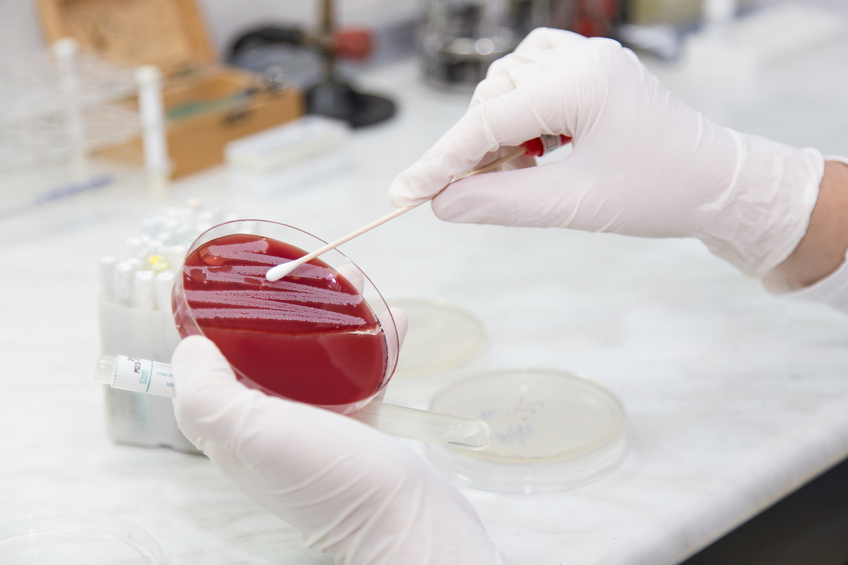Antibiotics and antimicrobial agents have been widely used over the last 70 years. While this served to reduce illness and treat many patients with infectious diseases, there have been unforeseen results in the form of antibiotic and antimicrobial resistance. The worst of the resistant bacteria have more recently been christened “superbugs” due to their severity and the difficulty they pose during treatment.
Superbugs are strains of infectious organisms that have adapted to have the ability to resist common antibiotics and antimicrobial agents. They typically arise when antibiotics are used, killing off the vulnerable bacteria while allowing the resistant bacteria to survive and continue to multiply. The selective pressure created by antibiotics encourages the propagation of strains that exhibit multi-drug resistant traits.
Transferrable Resistance
The saga of the superbug is still unfolding, but it is a common topic in the media as public concern over this health threat continues to grow. Stories about “super bacteria” in the Olympic waters or cases of patients infected with superbugs abound in the news.
It is such an urgent concern that the White House issued the National Action Plan for Combating Antibiotic-Resistant Bacteria last year. Congress took further action by appropriating $160 million for the CDC to fight antibiotic resistance in the fiscal year 2016.
The CDC has responded by beginning an aggressive Antibiotic Resistance Solutions Initiative to educate both patients and providers about the origin of superbugs, prevention, and treatment. The CDC has kept the public informed about developments by issuing alerts such as the recent alert about the first mcr-1 gene in E. coli bacteria appearing in a person in the U.S. in June.
This alert was particularly concerning because the mcr-1 gene consists of DNA that can be transferred between bacteria, giving them antibiotic resistance. The mcr-1 gene can actually be transferred between different species of bacteria, making its appearance in E. coli in the U.S. especially dire. In particular, this gene confers resistance to colistin, which is considered the antibiotic of last resort.
According to the CDC, “The presence of the mcr-1 gene… and its ability to share its colistin resistance with other bacteria such as CRE raise the risk that pan-resistant bacteria could develop.” CRE, or Carbapenem-resistant Enterobacteriaceae, is a family of bacteria that belong to a larger group of superbugs sometimes referred to as “nightmare bacteria” due to their multi-drug resistance and the fact that they kill up to 50% of patients who become infected. CRE has been named “among the country’s most urgent public health threats” by the CDC.
The Battle Rages On
According to the CDC, 1 in 7 catheter- and surgery-related healthcare-associated infections (HAIs) can be caused by any of 6 different antibiotic resistant bacteria, including the infamous MRSA and CRE. “That number increases to 1 in 4 infections in long-term acute care hospitals, which treat patients who are generally very sick and stay, on average, more than 25 days.”
While progress has been made in preventing HAIs, there is still work to be done. In the latest annual progress report produced by the CDC, hospitals had made great strides in reducing central line-associated bloodstream infections (CLABSIs) and moderate success reducing surgical site infections (SSIs).
However, there was “no change in the overall catheter-associated urinary tract infections (CAUTIs)” during the sampling period. Perhaps there will be greater progress by the time the next report is released. In the meantime, the CDC is working to fight antibiotic resistance through the following strategy detailed online:
- accelerating outbreak detection and prevention in every state;
- enhancing tracking of resistance mechanisms and resistant infections;
- supporting innovative research to address current gaps in knowledge; and
- improving antibiotic use
Healthcare professionals and organizations must work with patients to ensure the success of this campaign as they serve on the front lines of the fight against superbugs. Following simple infection control procedures can help prevent the spread of these diseases while educating patients about proper antibiotic use can help prevent resistance from developing in the first place.
Sources: cdc.gov, whitehouse.gov









